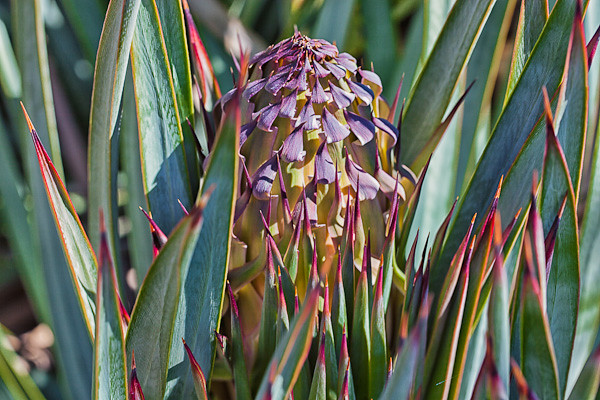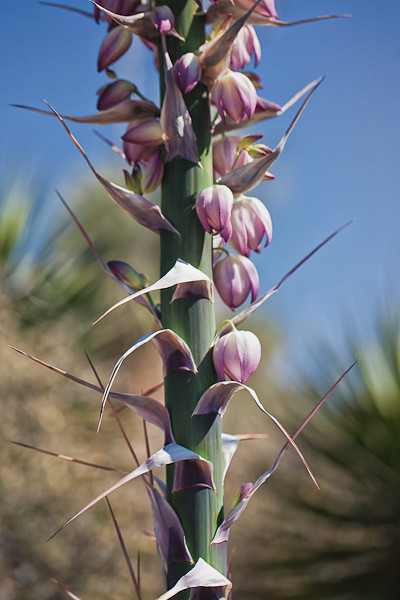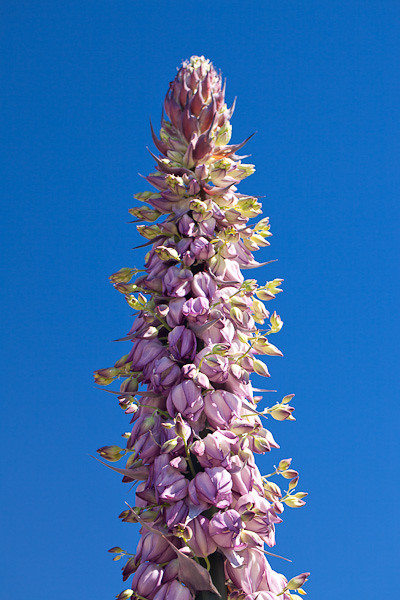It is easy to miss the details when looking at the whole. We admire the forest, but don’t see the trees, or we do notice a tree, but never examine the pattern of its bark or the intricacies of its flower.
I’ve been admiring the great stalks of flowers branching out from the many yuccas and agaves in bloom for many weeks, and just first thought to take a close up look at one of its flowers.
And when I finally did get a closer look – wow. Thousands of tiny white flowers on this sotolillo, white tinges with shades of purple, petals closing together, as if harboring a secret.
Spring pops up in the desert in the most unlikely of places, but when I began in earnest to go on a “spring hunt” looking for bits of spring, I realized that the season of new life surrounds me. Beauty of a different sort, perhaps, but beauty nonetheless.
————–
Bo Mackison is a photographer and owner of Seeded Earth Studio LLC, living and photographing in southern Arizona.










